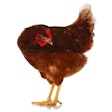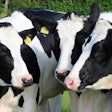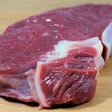
Within a few days of an official warning of the likely spread of avian influenza in Europe, Poland has reported its first cases of highly pathogenic avian influenzq (HPAI) in poultry of the winter 2020-2021 season.
On November 24, presence of the H5N8 HPAI virus was confirmed in a flock of an unreported number of laying hens in the county of Wolsztyn in the central province of Greater Poland (Wielkopolskie). This was announced by Poland’s chief veterinary office.
Cases in Poland are unsurprising. Over recent weeks, HPAI outbreaks have been confirmed in poultry and/or wild birds in a number of European countries, including neighboring Germany and Sweden.
Earlier this year, HPAI was known to be present in Poland. It was linked to 32 confirmed outbreaks in poultry up to the end of March, according to the Animal Disease Notification System of the European Commission (EC). There was also one outbreak in the Polish wild bird population during January of 2020, adding to three during the previous year.
To prevent the further spread of the virus, the veterinary office is urging the country’s poultry flock owners to ensure the highest possible levels of biosecurity. Among the measures suggested are to keep all commercial poultry housed. To minimize the possibility of contact with wild birds that may transmit the virus, poultry feed and water should only be provided indoors. Particular care is urged to cleaning and disinfecting boots and clothing of workers entering the farm, and hands should be washed with soap before any contact with poultry. Any signs of disease in the birds must be reported promptly to a veterinarian.
Possible impacts on poultry meat production and exports
Just recently, the USDA Foreign Agricultural Service (FAS) has reported on the challenges faced by Polish turkey meat producers earlier this year. Of all European Union (EU) countries, Poland exports the most turkey meat. In 2019, this amounted to 227,000 metric tons (mt) with an estimated value of US$730 million.
While not significantly impacted by the coronavirus (COVID-19) pandemic or HPAI outbreaks earlier this year, FAS forecast that the trade could be hit harder in the latter part of this year. As for many meat industries, the pandemic-related restrictions on the hospitality sector were expected to be a particular challenge. As well as the domestic market, these were applied to Poland’s leading export markets of Germany, Spain and the United Kingdom, as well as China and Ukraine.
According to FAS, Polish turkey meat production this year was forecast to be 1% higher year-on-year at 408,000 mt of carcass weight. Farm gate prices dropped by as much as 17% at one stage during the pandemic, and the value of turkey meat exports was 9% below the corresponding period of 2019. By accepting lower prices, Polish producers were able to maintain the previous year’s trading volume.
Of all EU countries, Poland achieved the highest level of self-sufficiency in poultry meat production last year. According to the region’s poultry meat producers’ association, AVEC, this amounted to 250% in 2019. Only Hungary, Italy, Lithuania and Spain produced more meat than their domestic requirement. After Poland, the highest level was 132% from Hungary.
The latest production figures from Poland were 2.23 million metric tons of broiler meat (carcass weight) and 400,000 mt of turkey meat. For both meats, Poland leads the output rankings, according to AVEC.
Poland’s latest HPAI outbreak could restrict its export markets if destination countries opt to ban imports. With this trade such an important features of the country’s poultry sector, we could see increasing instability in the global poultry meat markets, as African swine fever has created for world pork trade.
View our continuing coverage of the global avian influenza situation.


















